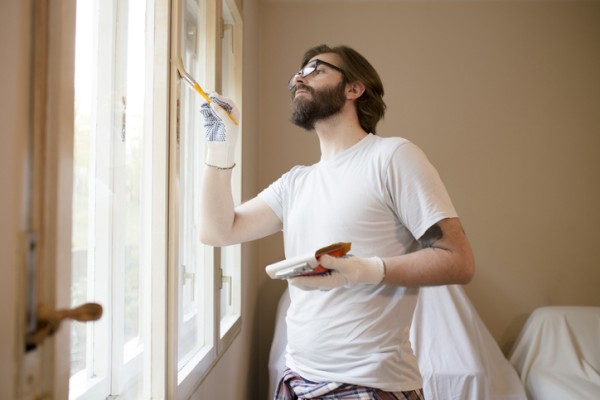
Window frames are an often-overlooked component of the home when it comes to maintenance but they shouldn’t be. Well-maintained frames support the function, appearance and energy performance of your windows, helping protect your investment for years to come.
With increased focus on energy efficiency and durability in today’s builds and renovations, window care is more important than ever. This guide outlines practical maintenance and cleaning tips for all frame types, suited to the diverse Australian climate.
Why regular maintenance matters
Whether your frames are timber, aluminium, uPVC, fibreglass or composite, they all require periodic maintenance to perform as designed. Proactive care:
- Preserves thermal efficiency and airtightness
- Prevents corrosion, warping and weather damage
- Extends product lifespan
- Keeps warranties valid
- Improves function and ease of use
- Enhances long-term appearance and property value
General care: the basics for all frame types
Most window maintenance tasks are simple and should be carried out every six months or more frequently in coastal or dusty environments. These include:
- Vacuuming or sweeping tracks to remove debris, sand and insects
- Cleaning frames with warm water and a mild (pH-neutral) detergent
- Lubricating moving parts like rollers, locks and hinges with silicone spray
- Inspecting weep holes and drainage slots to ensure they’re clear and functioning
- Checking for loose seals, worn gaskets or cracked glazing beads
Avoid harsh abrasives, steel wool or acidic cleaners, which can damage finishes or void warranties.
Material-specific maintenance
Aluminium frames
Aluminium is a low-maintenance option but can corrode in coastal environments. Clean with a non-abrasive cloth and neutral detergent. Inspect the surface for oxidisation or pitting, especially around fasteners and joints. Apply touch-up paint or sealant if protective coatings are compromised.
uPVC frames
uPVC requires minimal upkeep. Wash with soapy water and rinse well. Avoid solvents and abrasive tools. Check seals and drainage holes regularly. Discolouration can occur over time—particularly in high-UV zones—but most modern products have UV-resistant coatings to reduce fading.
Timber frames
Timber is highly durable if maintained. Inspect for cracking, flaking paint or swelling caused by moisture. Sand and repaint or reseal when needed. In humid or bushfire-prone areas, check for rot, mould or termite activity. Use approved finishes that meet any applicable BAL (Bushfire Attack Level) requirements.
Fibreglass frames
These are strong and stable, especially in extreme climates. Clean with standard detergents and water. Inspect joints to ensure expansion and contraction haven’t affected frame integrity. Little else is needed beyond basic care.
Composite frames (e.g. aluminium/timber)
Each component should be maintained according to its material type. Aluminium cladding will protect timber interiors, but it’s still worth checking internal timber for signs of wear, especially in high-condensation areas like bathrooms or laundries.
Adapting to your climate
Australia’s varied climate zones call for different care routines:
- Coastal: Rinse frames monthly with fresh water to remove salt deposits that can accelerate corrosion, especially on aluminium.
- Tropical/humid: Watch for mould, timber swelling or pest activity. Allow ventilation behind curtains or pelmets.
- Desert or inland: Dust build-up can clog tracks and drain holes, clean more frequently during dry spells.
- High-UV regions: Consider UV-stable paints and foils to reduce fading or brittleness, particularly for timber and uPVC frames.
Cleaning checklist
Use this as a guide to maintain your windows seasonally:
- Clear tracks and frame edges of sand, leaves and insects.
- Wipe frame surfaces with a soft cloth and soapy water.
- Rinse thoroughly and dry with a clean towel.
- Check that all seals are intact and undamaged.
- Lubricate hardware and moving parts with silicone-based spray.
- Check for signs of rot, rust, warping or cracking.
- Touch up paint or finish as needed, especially for exposed timber or anodised aluminium.
Troubleshooting common issues
| Issue | Solution |
|---|---|
| Sticky sashes or sliders | Clean tracks, dry thoroughly and apply silicone spray |
| Corroded aluminium | Sand lightly, apply rust-neutralising primer and paint |
| Swollen timber | Allow to dry, sand back, reseal and repaint |
| Blocked weep holes | Use a soft nozzle or pipe cleaner to clear debris |
| Faded or chalky finishes | Recoat with UV-stable paint or foil where applicable |
If frames are damaged beyond repair or affecting glazing integrity, consider replacement to restore thermal and acoustic performance.
Long-term benefits
Regular maintenance doesn’t just improve function, it pays off:
- Preserves energy performance especially with modern glazing and airtightness standards
- Avoids premature replacement saving on costs and resources
- Retains warranty coverage many manufacturers require maintenance as part of terms
- Improves indoor air quality by ensuring seals and weep systems work as intended
Windows are more advanced and high-performing than ever—but they still need care. Whether your home features traditional timber or modern uPVC systems, a few simple cleaning routines each year can go a long way in preserving the value, comfort and performance of your windows.
Keep your maintenance regular, your frames clean, and your seals tight—and your windows will reward you with years of smooth, efficient service.





